Balsam fir: description of varieties, secrets of planting and care

Balsam fir is a common coniferous plant that was brought to Russia from abroad, but quickly spread throughout our country. It is quite easy to care for the tree, it does not require specific maintenance measures and will be an excellent decoration for your site.
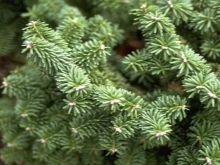
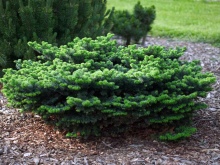
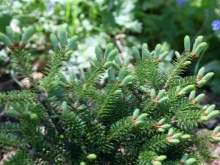
General characteristics
Balsam fir is originally native to North America. On the territory of this country, this plant is quite common, and most often the tree grows in swampy places. The most favorable for the plant is a cool climate of high humidity, but high temperatures and heat are destructive for fir.
In natural conditions and in natural habitats, the tree can reach 25 meters in height and 0.8 meters in diameter. The outer covering of the trunk is brown bark. The root system is not very deep, on the contrary, it is close to the surface of the earth.
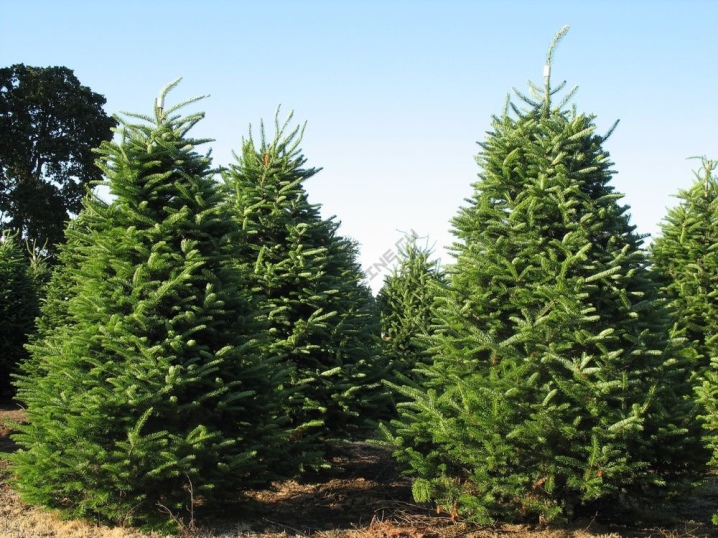
The fir of this variety was called balsamic due to the fact that the tree emits a specific aromatic resin, which, among other things, has healing and medicinal properties. The tree has an unusual cone-shaped crown. The branches themselves are quite thin, but long and close to each other, so sometimes you can see specimens of balsam fir, the branches of which hang almost to the surface of the earth. The branches are covered with needles, the length of which can vary from 1.5 to 2.5 centimeters. By themselves, these needles are not sharp, since there is a small notch at their tips.
Thanks to these properties, everyone has the opportunity to hold balsamic fir in their hands without any discomfort.
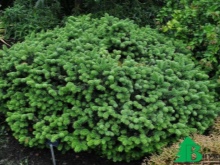
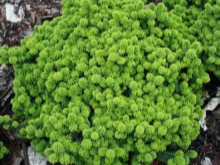
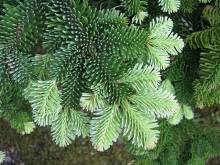
Fir of this variety also has cones, which are located at the very top of the tree in small and compact groups. Interestingly, the buds change color over time. At first, they have a slight purple tint, and then they can acquire brown tones. In the fall, the buds release the seeds needed for the plant to reproduce. Balsam fir is a plant that has the status of a long-liver, as it can grow up to 300 years.
It is important to take into account that the growth rate of the tree is rather low and is only 1 meter in 10 years.
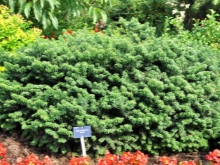


Popular varieties
Natural balsam fir takes root well and grows in parks and squares. However, for home cultivation and in order to use the plant in landscape design, breeders have bred several varieties of wood, each of which has its own unique characteristics. Let's consider a description of the most popular of them.
- "Diamond". Fir "Diamond" or "Korean diamond" is rather small in size, the maximum tree height is 50 centimeters. The shape of the crown of the plant is spherical, in some cases it can be slightly flattened. In order for the plant to fully grow and develop, it must be planted in the shade. For a year, the plant can add up to 4 centimeters - thus, the fir reaches its maximum height at the 5th year of life. The tree exudes a pleasant aroma, and the needles are pleasant and soft to the touch.
The plant is often planted in groups. Fir "Brilliant" is very unpretentious in care.
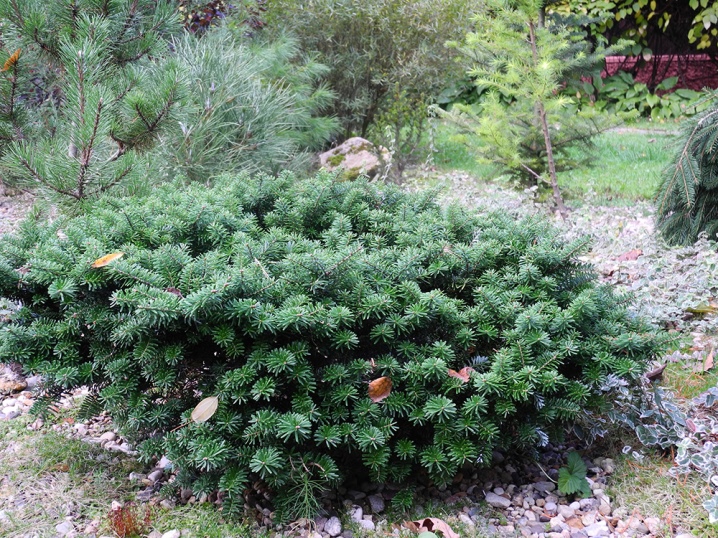
- "Nana" is a dwarf fir. Its height does not exceed 1 meter, and the crown diameter can reach only 2 meters. The needles are painted in a bright green shade, located often and close to each other. The plant resembles a flattened ball in shape. Nana's cones reach 0.1 meters in length and do not exceed 0.02 meters in diameter. Their shade is purple-brown. They are at the top of the plant and fully mature in November.
Due to the fact that the plant belongs to the dwarf category, it is often planted in pots or containers.
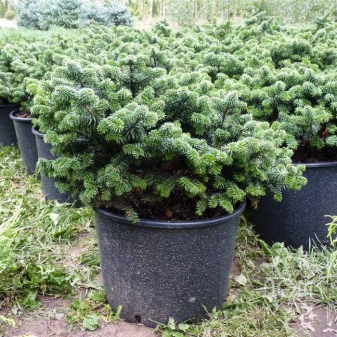

- "Piccolo". Another dwarf variety of balsamic fir with a rounded crown. The color of the needles is ambiguous, has a blue-green tint, and green or light green tones are observed at the ends of the shoots. By themselves, the needles are in a radial position, they have a bent shape and a short length. The bark is smooth and soft to the touch with many holes. From these holes oleoresins, resins, internal juices and other liquids are released. "Piccolo" has cylindrical cones and spherical buds.
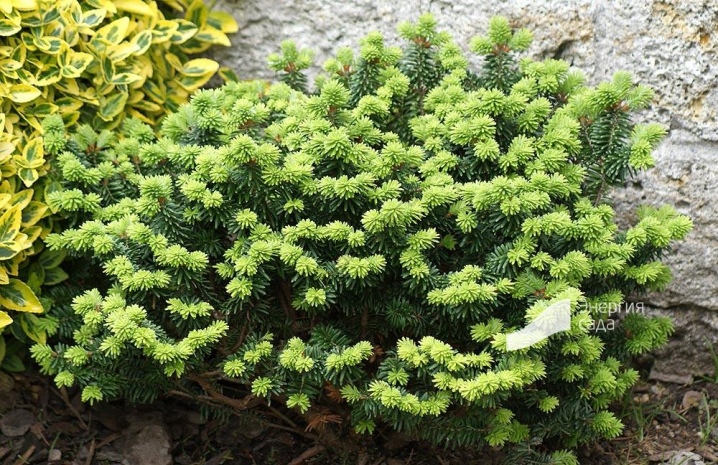
- "Kiwi". Balsam fir "Kiwi" has a shade similar to the color of the fruit of the same name. The dwarf plant does not exceed 50 centimeters in height and is an excellent decoration for any garden or vegetable garden.
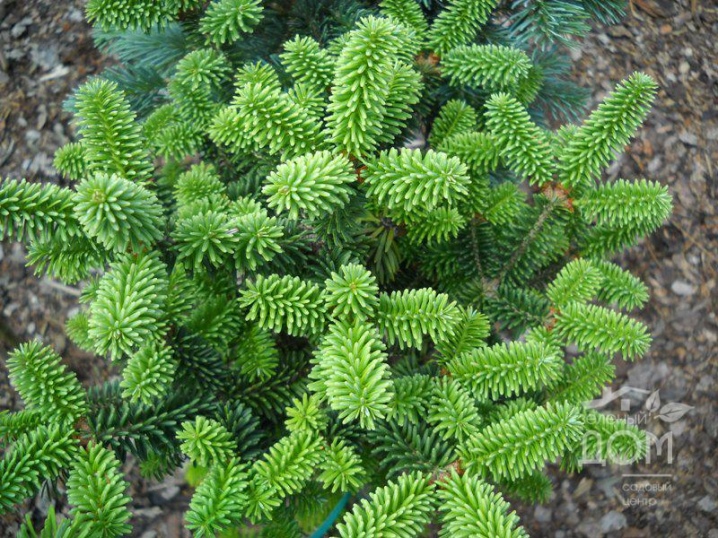
- Weeping Larry Is a type of tree that does not require a garter. Translated from English, the name of the plant is translated as "Crying Larry". Fir is weeping - its branches grow both vertically and horizontally. The level of frost resistance of the plant is in the range from 3 to 5.
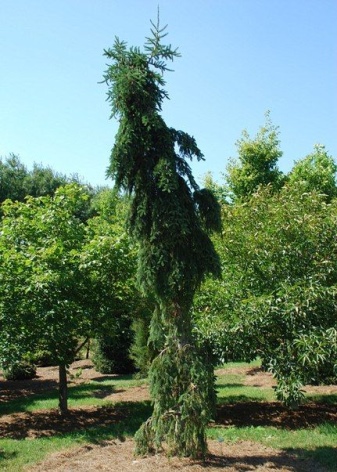

- Tyler Blue has a pyramidal shape. It grows rather slowly and has bright blue needles.
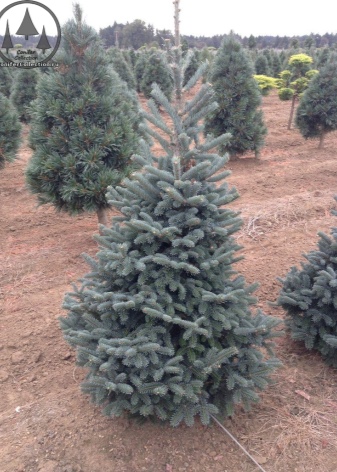
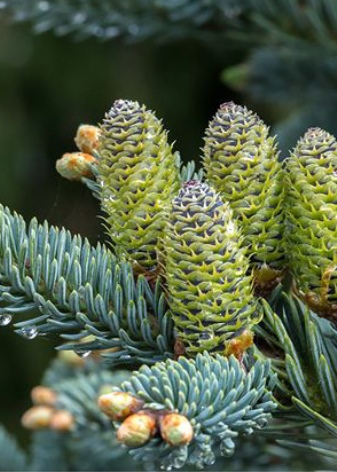
Important! A wide variety of varieties of balsamic fir allows you to choose exactly the plant that will perfectly fit into the design of your site.
Landing rules
In order for the plant to actively grow and develop, it is necessary to make the correct planting. First, it is important to properly prepare the soil. So, the soil for planting balsamic fir should consist of leafy earth (or humus), clay, as well as sand or peat (the ratio of materials is 3: 2: 1). To plant a plant, you need to dig a small hole 0.8 meters deep. When planting, the neck of the tree should remain above ground level.
If you decide to transplant the plant, then this procedure should be carried out in the spring.

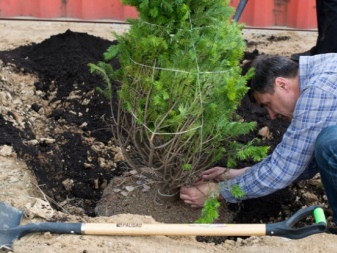
Care features
Balsam Fir Care includes a whole range of activities.
- Watering. Watering balsam fir should be done regularly and systematically. The tree loves moisture, so watering should also be abundant. The minimum frequency is once a week. During frequent rains (for example, in spring), it will be enough to water the plant every 2 weeks. The required volume of water for 1 tree is 15 liters.
- Loosening. After each watering procedure carried out, one must not forget about the need to loosen the soil around the seedlings. Loosening should be done to a depth of 10–12 centimeters. It is also advisable to cut out the weeds.
- Mulching. It is necessary to maintain optimal soil moisture levels. The procedure is carried out near the trunk circles using sawdust, sleep or rubble. The mulch layer should be no less than 10, but no more than 40 centimeters.
- Fertilizer. For active growth and development of the tree, it is necessary to apply fertilizers and fertilizing to the soil in which the fir grows. This procedure should be carried out at least 2 times a year. Fertilizers include substances such as manure, wood ash and potash additives. For the first time, you can feed a plant only in the 2nd or 3rd year of its existence.
- Wintering. Before the onset of cold weather, the trunk of the fir must be whitewashed with lime and copper sulfate. In this case, the trunk must be covered with roofing material, and the ground around it should be mulched. The roots are covered with spruce branches for 0.5-0.8 meters.
- Pruning. Correct pruning is essential for the splendor of the crown of the tree. The maximum cutting length is one third. The procedure is carried out earlier than 15 years of the tree's life.
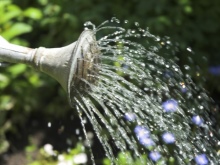


Reproduction methods
Balsam fir can be propagated in three ways.
- Cuttings. In order to propagate a plant in this way, it is necessary to cut off a branch with several shoots from a 1 year old seedling. This cutting should be immediately planted in a container.
If you want the stalk to take root better, then you should use two- or four-year-old shoots.
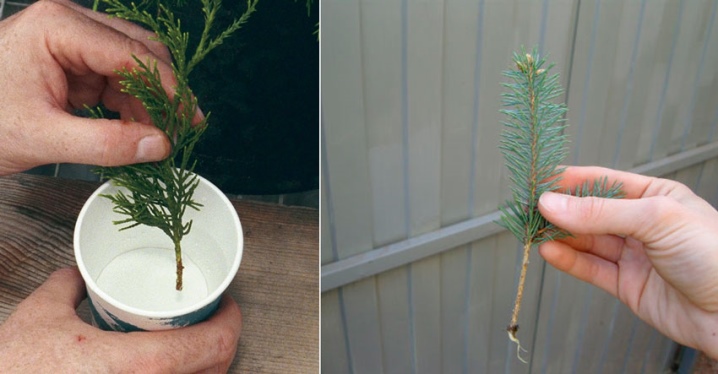
- Seeds. In order to propagate a tree in this way, you need to cut off the cones from the plant (if possible, together with a branch). You need to choose cones that are not yet ripe, but have already blossomed. They need to be soaked. Sprouted seeds need to be buried several at a time in the soil to a depth of 1–2 centimeters, and then cover this area with a film that will create a greenhouse effect. At the same time, remember to lift the airing film.
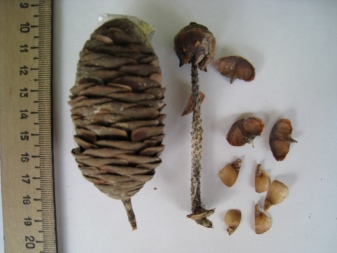
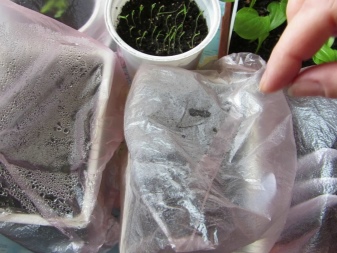
- Saplings. You can buy them at any garden store. Seedlings are transplanted from pots to a permanent place.

Diseases and pests
Despite the fact that balsam fir itself is a hardy plant that is resistant to various kinds of adverse factors, it can succumb to the negative influence of some pests. These include the following:
- fir hermes;
- pine cone moth;
- bark beetles;
- wireworm;
- shoot moth.

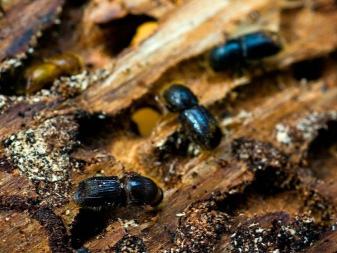
Signs of plant diseases are the yellowness of the needles. To cure the plant, you need to remove the affected branches, and treat the cuts with garden pitch. And also as a preventive measure, the crown should be sprinkled with Bordeaux liquid (at a concentration of 2%).
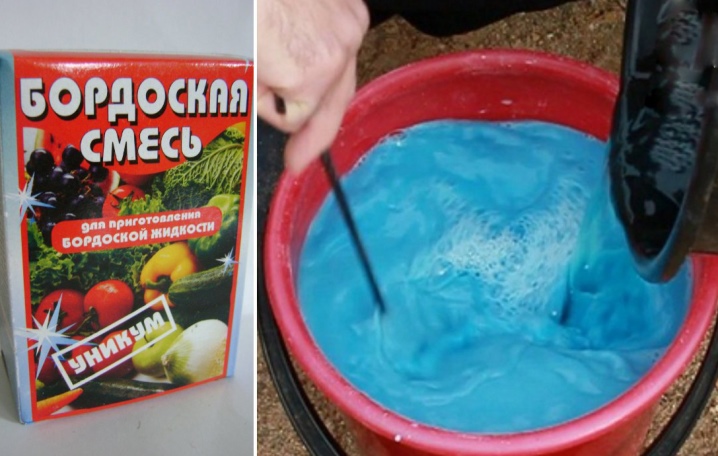
Use in landscape design
Balsam fir is often used by landscape designers to decorate public areas, as well as summer cottages and country houses. The main inconvenience in this sense is the slow growth rate, so if you want a quick result, then you should transplant already mature plants.
Balsamic fir of all varieties can be used both independently and in various herbal compositions. Fir can be used to decorate flower beds, plant around the perimeter of the house, or symmetrically decorate gazebos with them.
Firs are unpretentious to care for, and are also quite noble plants that will give status to your site.
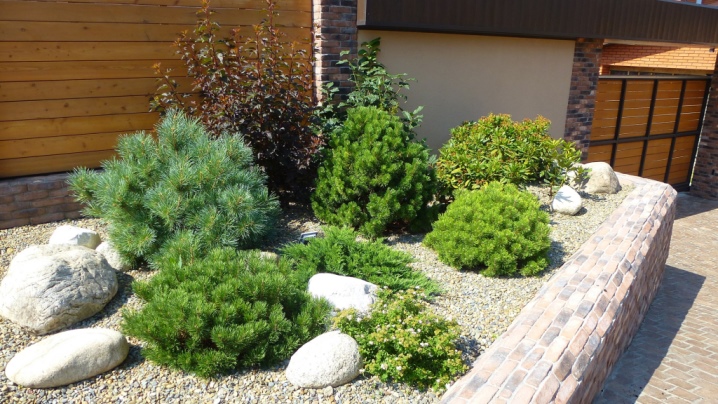
The plant is preferred by many homeowners not only for its external characteristics, but also for its medicinal properties. In particular, the scent of the coniferous tree relaxes the body and improves the functioning of the respiratory organs. In addition, balsamic fir extract has a disinfecting effect, accelerates wound healing, relieves pain, and eliminates spasms.
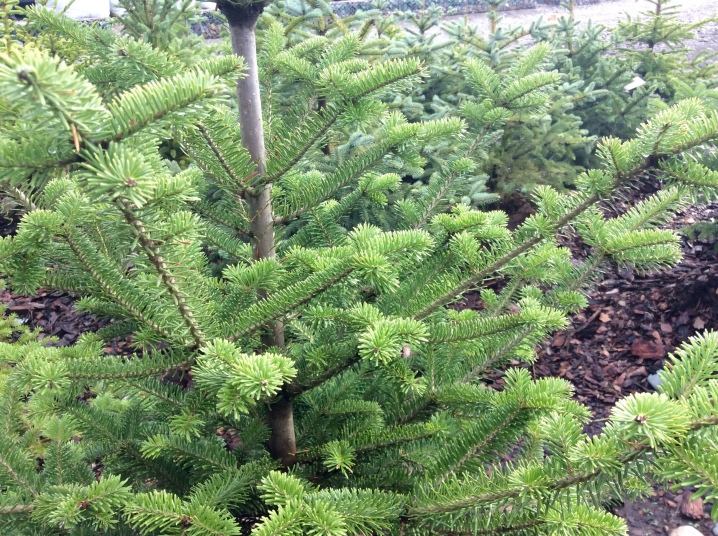
About balsam fir "Nana", see the next video.



































































The comment was sent successfully.